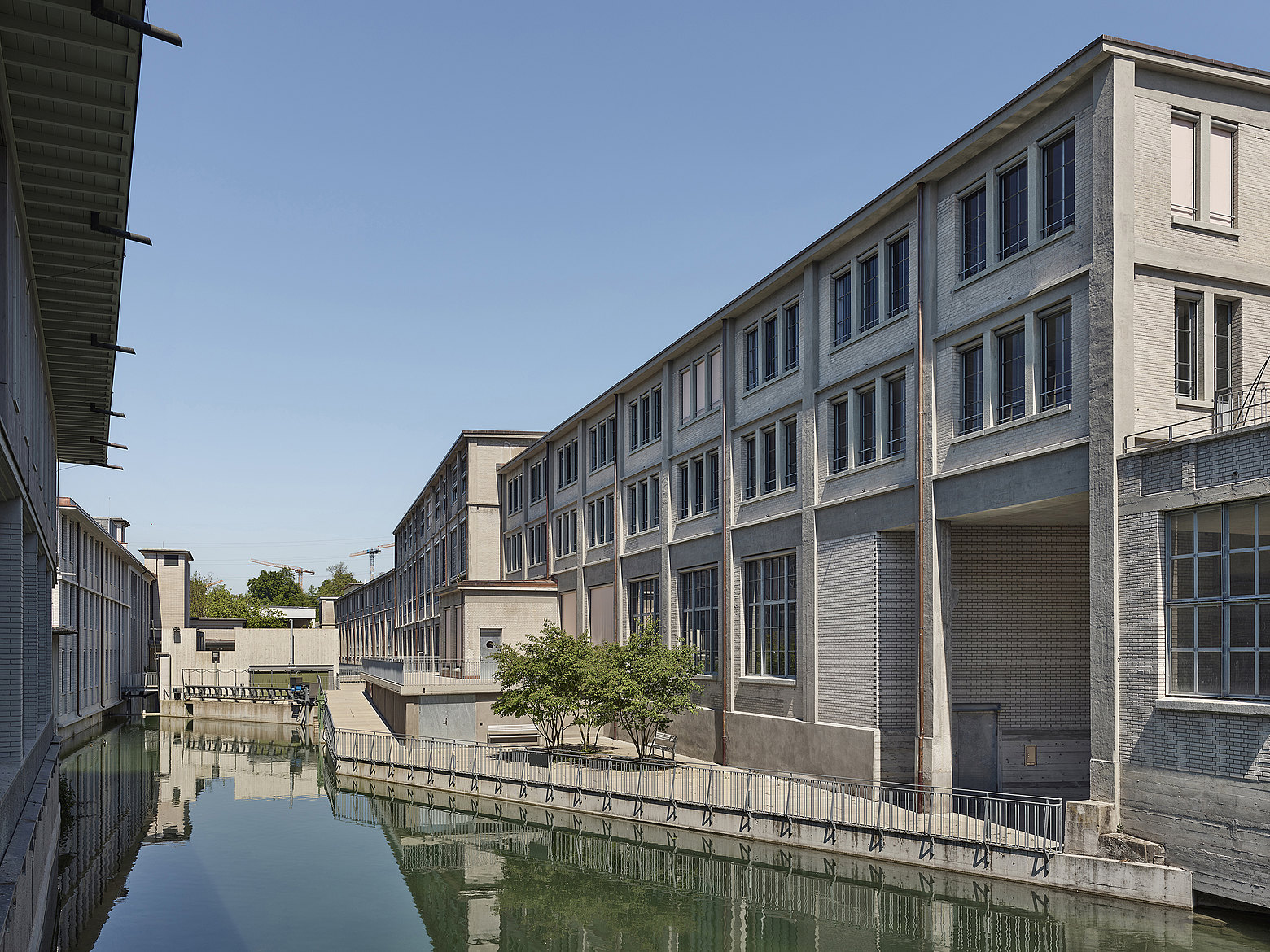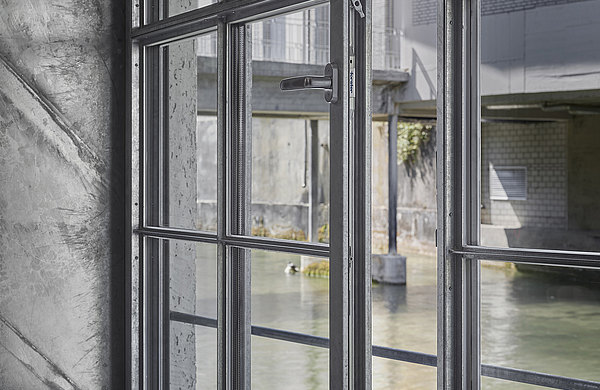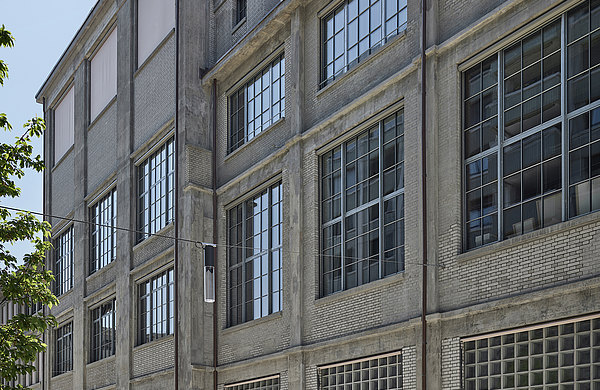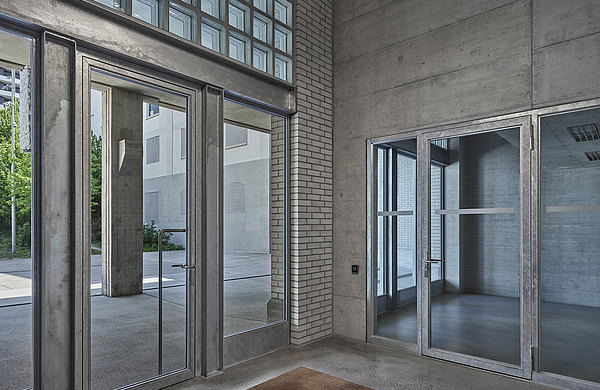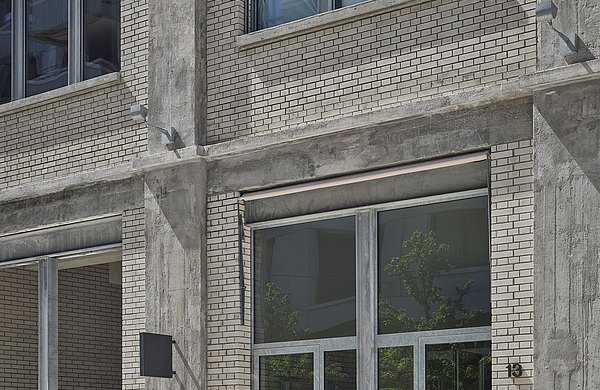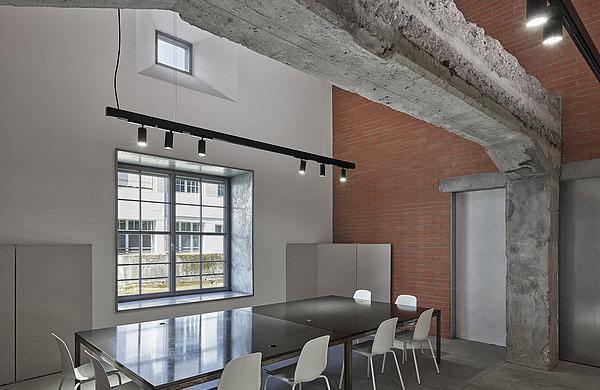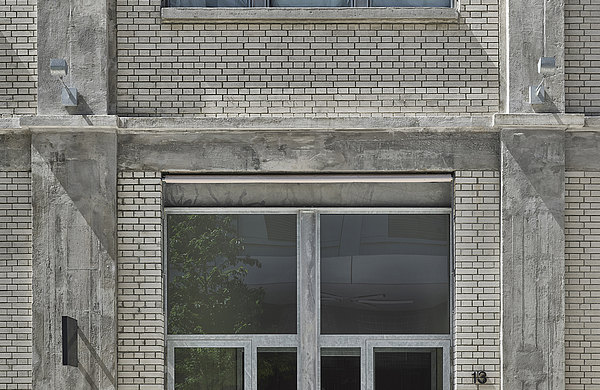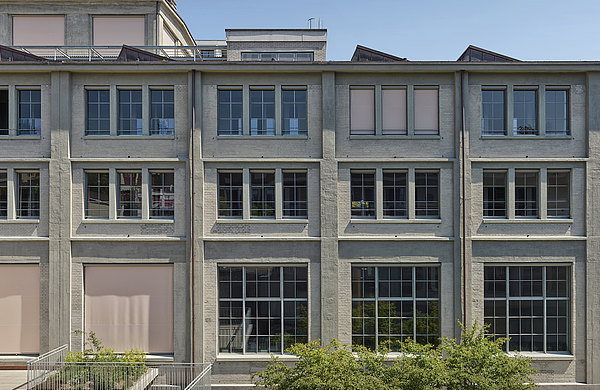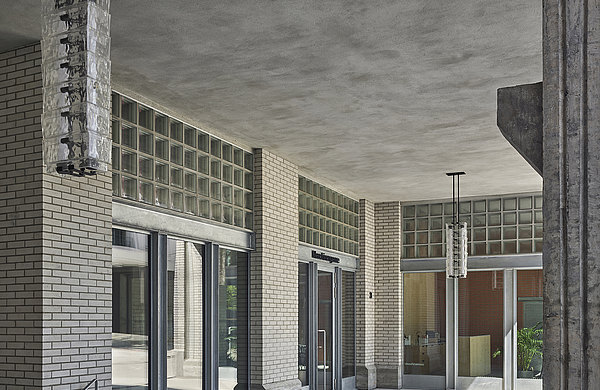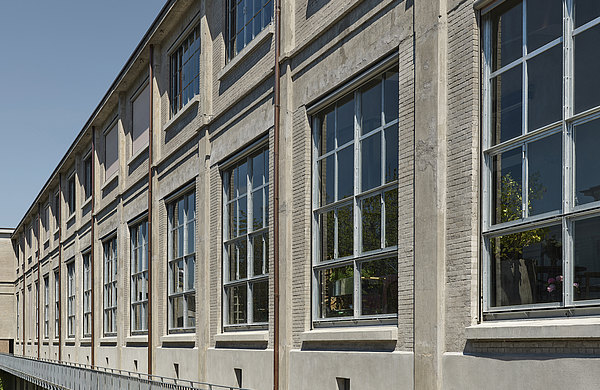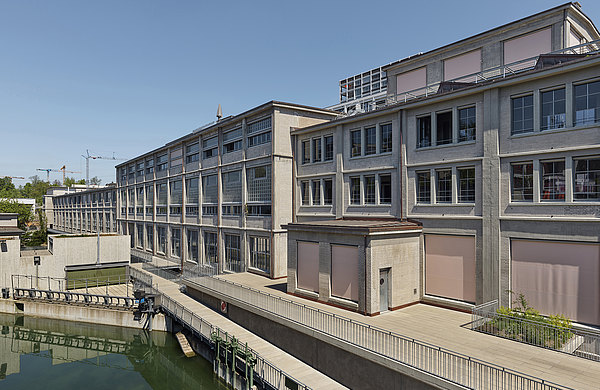Conversion of the Papieri site in Cham
Housing, commerce and culture in the former paper machine production halls
Converted industrial buildings often have a special bit of magic. Spacious rooms, raw materials, expansive sites and the charm of past centuries form the canvas for a small-scale, lively new urban space concept. In the Swiss town of Cham on the northern shore of Lake Zug, a similar transformation is currently underway at the Papieri site. Part of this site includes the machine production halls of a historic paper factory, which was built at the beginning of the 20th century and was still in operation until 2015. The renowned Zurich-based firm Boltshauser Architekten has now transformed the PM 1-4 building complex into a unique address for culture, commerce, residential lofts and studios. Maintaining the industrial character was at the heart of the renovation process. This is accompanied by window and door elements with hot-dip galvanised steel profiles from Forster, which aptly invoke the existing architecture.
The tradition of papermaking in Cham dates back to the middle of the 17th century, when hydropower from the Lorze River was first used for a paper mill. Passed down through generations, the business became industrial in scope over time. With the arrival of the first Hollander beater – the machine that processes the fibres – the demand for adequate premises for the ever-increasing production also increased. The mixture of factory buildings, machine production halls, workshops and homes grew into an impressive industrial site. From 1913 onwards, the first Hollander beater building was built east of the Lorze, with paper machine production halls 1-4 added over the next 30 years. A new chapter in their use has now begun.
Master plan for a prestigious district
The ultimate relocation of paper production abroad paved the way for an important urban development project – around 4,000 people are expected to live and work on the 12-hectare Papieri site by 2030. To this end, an urban planning project is being developed according to the criteria of the “2,000-Watt Sites” label. This project involves the addition of towering new buildings around the existing buildings, some of which are listed. The ribbon development, new squares and the access concept master the balancing act between a modern urban district and a deep awareness of the local history.
Following a cooperative planning process with citizen participation, the master plan follows the urban planning concept from Albi Nussbaumer Architekten from Zug and Boltshauser Architekten from Zurich. The latter was responsible, among other things, for the conversion of the approximately 250-metre-long strip between the Lorze and Maschinengasse. The former, on the other hand, has now moved its offices into a studio loft in the old paper halls.
Refurbishment in harmony with history
Five commercial units, seven loft studios and 52 apartments have been built in the oblong site of around 2,620 square metres. Cultural, commercial and catering facilities are located along the ground floor area, which are intended to transform Maschinengasse into a lively urban space. The residential lofts and studios are located on the up to three upper floors. For the conversion, Boltshauser Architekten had the building stripped back to the supporting and ceiling structure, including the existing differences in level. The visible skeleton construction made of reinforced concrete shapes the structure of the facade even after the conversion and remains partially visible inside. Some of the removed materials were incorporated back into the renovation project. Infills made from cement, brick, sand-lime brick, steel elements and exposed concrete characterise the shells of the newly designed rooms.
Door and window elements made of hot-dip galvanised steel
The distinctive facade elements include mullion windows, glass blocks and steel windows and doors, all of which emphasise the industrial past. To this end, the architects had existing windows renovated or replaced with new ones that invoke the old design. On the west side of the building, facing the Lorze, a continuous loggia now forms a climate buffer to the inside. As a result, the original windows with their filigree profiles could be preserved or suitably supplemented.
The forster unico xs windows, the forster unico Hi door and portal elements and the forster unico EI30 fire protection elements used in the project combine high heat-insulating properties with the unique aesthetics of extremely slim profiles. These profile systems from Forster can also be hot-dip galvanised thanks to the absence of synthetic insulating materials. The hot-dip galvanising surface treatment guarantees long-lasting, durable profiles that retain their value. These underline the desired industrial charm thanks to their raw character, especially in the renovation project at the Papieri site.
Cham, Svizzera
Products:
forster unico Hi hot-dip galvanised door and portal elements
forster unico EI30 hot-dip galvanised fire resistant doors
forster unico xs hot-dip galvanised window elements
Architecture: Boltshauser Architekten AG, Zurich
Client: Cham Immobilien AG, Cham (CH)
Photography: Damian Poffet

